10 Best Speech Translator Apps (Free & Paid) for Live Voice Translation

The demand for real-time speech translation has surged as remote work, travel, and multilingual collaboration became routine. People now expect instant, natural communication across foreign languages, not clunky voice bots. In response, a new wave of AI-powered speech translator apps has emerged, capable of delivering live and accurate translations that rival those of human interpreters.
Today, there are many options, from free and travel-friendly tools to professional-grade platforms. Some prioritize convenience and accessibility, while others focus on linguistic nuance, privacy, or integration with business software.
In this guide, we list the 10 best speech translator apps available right now, based on real-world performance, usability, and how well they adapt to the way people actually communicate.
Top 10 Speech Translator Apps Reviewed & Compared
Before diving into the comparison, it’s worth understanding what modern speech translator apps actually deliver. The best ones combine real-time voice recognition, natural-sounding output, and context-aware AI that captures more than just literal meaning. Some focus on daily accessibility (helping travelers or casual users communicate quickly) while others bring professional-level precision for business meetings, live broadcasts, and more.
The table below offers a quick overview of each app’s standout feature, language coverage, and pricing before we break them down in detail.
| Speech Translator App | Standout Feature | Number of Supported Languages | Pricing |
| Maestra | AI voice cloning that preserves your voice tone and style in live speech translations | 125+ | Free trial available; live translation plans start at $79/month |
| Google Translate | Completely free with conversation mode and automatic language switching | 133 | Free |
| Microsoft Translator | Multi-person sessions with up to 100 participants in real-time | 100+ | Free for personal use; enterprise plans via Microsoft 365 |
| iTranslate | High-quality, natural-sounding voice output with offline capabilities (Pro) | 100+ | Free version available; Pro version is $9.99/month or $99.99/year |
| Papago | Superior accuracy for Asian languages with tonal and formality handling | 13 | Free |
| Reverso | Native speaker audio examples showing real conversational context | 17 | Free version available; Premium is $6.99/month or $49.99/year |
| Yandex Translate | Exceptional performance for Russian and Slavic languages with offline mode | 100+ | Free |
| DeepL Voice | Enterprise-grade accuracy with Zoom and Microsoft Teams integration | 30+ | Custom enterprise plans |
| Speak & Translate | Apple Watch integration with hands-free speech translation | 100+ | Free version available; Premium is $7.99/month |
| Vocre | Extensive offline translation with region-specific dialect voices | 59 | Free version available; Premium is $8.99/month |
1. Maestra
Best for: Teams, professionals, and creators needing real-time multilingual communication with natural AI voice output.
As one of the best speech translator apps, Maestra's live voice translator allows you to speak naturally in one language and have your voice translated into many others. It supports over 125 languages, offers browser-based access (no download required), and handles multilingual sessions where each participant can hear translations in their own chosen language.
Pros
- Real-time speech translation with AI voice cloning that preserves your voice tone and style
- Shareable multilingual sessions where each participant can hear translations in their chosen language
- Zoom, OBS, vMix, and Microsoft Teams integrations
Cons
- Requires stable internet connection for best performance
- Short free trial before requiring a paid plan
Pricing: Free trial available; live translation plans start at $79/month. Enterprise plans available with custom pricing.
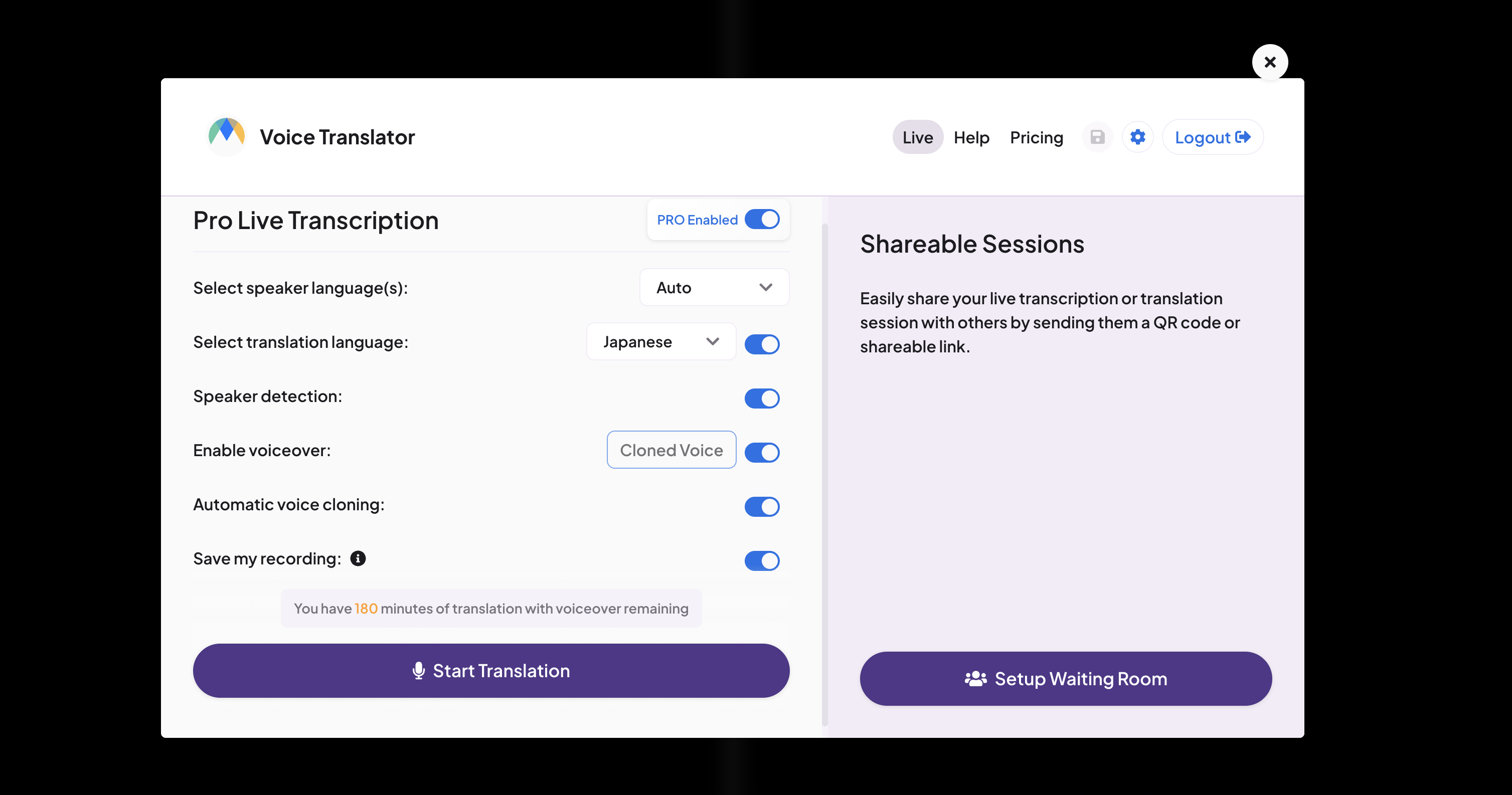
2. Google Translate
Best for: Everyday users needing a free and versatile speech translation app with broad language support.
Google Translate lets you have real-time voice conversations in 133 languages. Simply tap the mic, speak normally, and hear your words instantly translated aloud. While not perfect with complex speech, it's the most accessible free option for travelers and casual users.
Pros
- Conversation mode with automatic language switching between two speakers
- Handles different accents fairly well
- Completely free with unlimited speech translations
Cons
- Speech recognition may struggle with background noise and overlapping voices
- Accuracy can drop with complex sentences or technical speech
Pricing: Completely free.
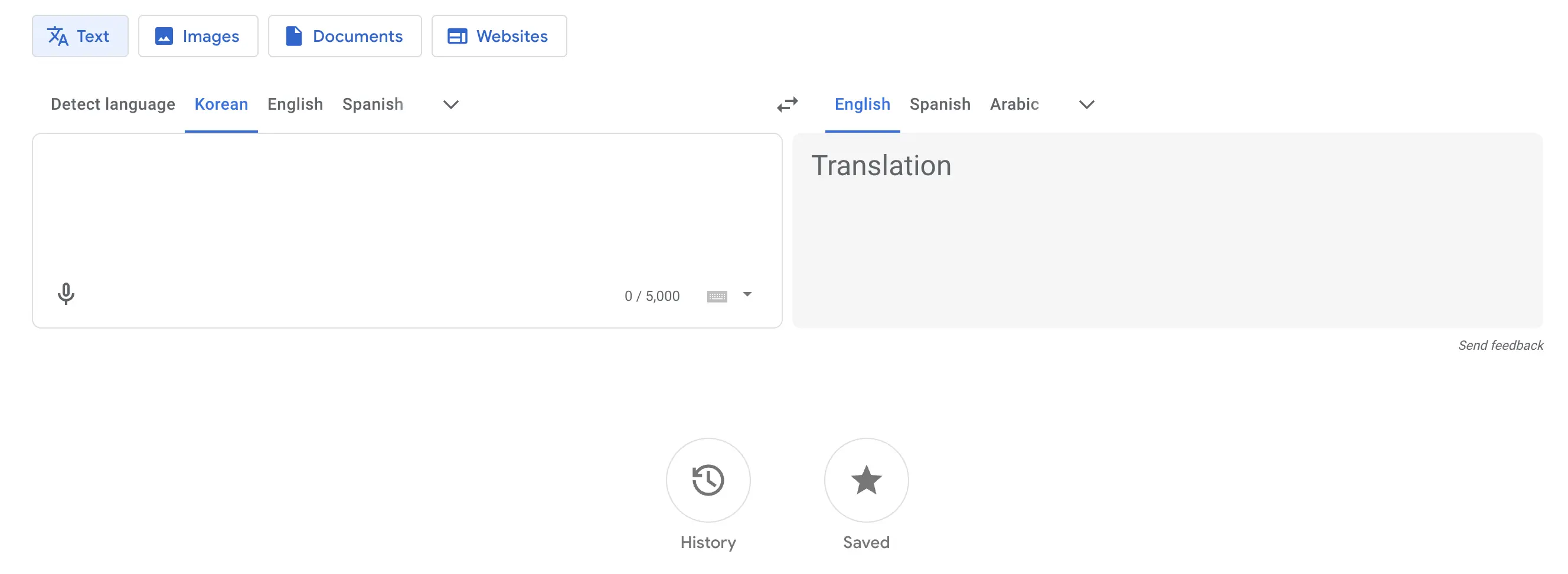
3. Microsoft Translator
Best for: Business users requiring professional-grade speech translation with multiple participants.
Microsoft Translator excels in professional and group settings. Up to 100 participants can join a shared translation session, each speaking their own language while receiving real-time speech translations on their devices. Perfect for international meetings, conferences, and multilingual events.
Pros
- Excellent speech recognition accuracy across different languages and accents
- Real-time transcription of spoken conversations
- Split-screen conversation mode for two-person dialogues
Cons
- Interface can feel dated compared to newer translation apps
- Group conversation features require all participants to install the tool
Pricing: Free for personal use; enterprise features available through Microsoft 365 subscriptions (pricing varies by plan).
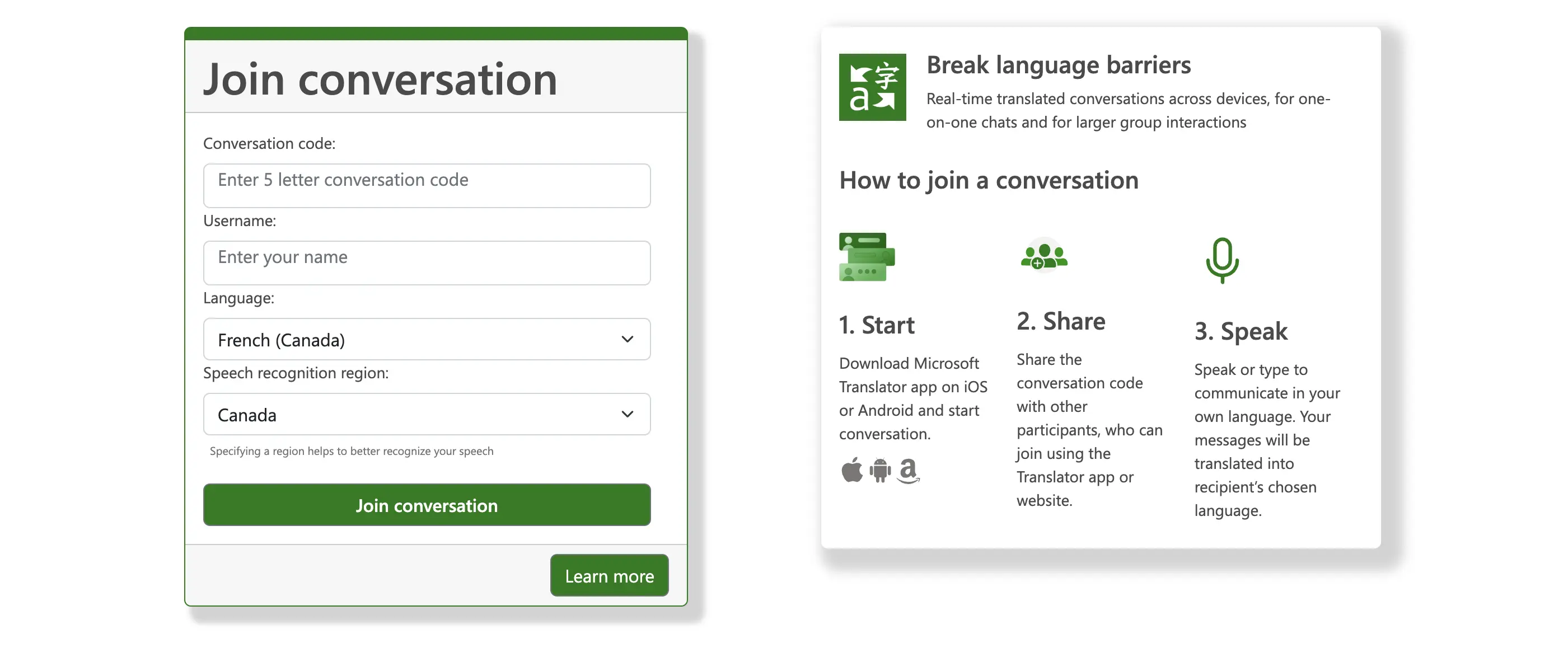
4. iTranslate
Best for: Users seeking a polished speech translation experience with high-quality voice output.
iTranslate delivers smooth voice-to-voice translation with natural, lifelike speech output in over 100 languages. Its speech recognition is fast and accurate, handling different accents better than most competitors. The interface is simple: tap, speak, and get instant text and audio translations.
Pros
- Quick speech recognition with minimal lag
- Conversation mode with clear speaker identification
- Offline voice translation available in the Pro version
Cons
- Free version severely limits speech translations (only 3 per day)
- Voice translation requires good internet connection in free version
Pricing: Free version with limitations; iTranslate Pro costs $9.99/month or $99.99/year.
5. Papago
Best for: Travelers and professionals working with Asian languages, especially Korean, Japanese, and Chinese.
Papago excels at translating spoken Asian languages that often challenge Western-developed translation apps. Its speech recognition handles Chinese tones, Korean context, and Japanese formality levels with impressive accuracy. It even manages code-switching (mixing languages) better than most competitors, a major advantage in multilingual Asian contexts.
Pros
- Natural-sounding voice output for Korean, Japanese, and Chinese
- Handles tonal languages and formal/informal speech levels effectively
- Offline voice translation available for key language pairs
Cons
- Limited to 13 languages (primarily Asian)
- Smaller language selection makes it impractical outside Asia
Pricing: Completely free.

6. Reverso
Best for: Language learners who want to understand how native speakers actually talk, not just translate words.
Reverso focuses on teaching authentic spoken communication rather than just translating individual words. It includes voice input and audio output, but its real strength is showing contextual examples of how native speakers actually talk. This helps users grasp natural pronunciation, intonation, and conversational rhythm.
Pros
- Audio examples from native speakers in real conversational contexts
- Pronunciation guides with phonetic breakdowns for difficult words
- Voice input with comparison to native speaker pronunciation
Cons
- Not designed for real-time conversational speech translation
- Only 17 languages supported (major European languages only)
Pricing: Free with limitations; Premium subscription at $6.99/month or $49.99/year unlocks unlimited features.

7. Yandex Translate
Best for: Voice translation involving Russian and Eastern European languages in conversations.
Yandex Translate stands out for Russian, Ukrainian, and other Slavic languages, outperforming many Western-developed translators. While it supports speech translation in over 100 languages, its best performance is with Russian and nearby regional languages. The speech features work offline with downloaded language packs, making it reliable for travelers in areas with poor connectivity.
Pros
- Exceptional speech recognition accuracy for Russian and Slavic languages
- Completely free with unlimited voice translations
- Predictive voice input suggests completions as you speak
Cons
- Voice quality varies significantly (excellent for Russian, mediocre for others)
- Background noise may impact speech recognition accuracy
Pricing: Completely free.

8. DeepL Voice
Best for: Businesses and professionals who demand elite-level translation accuracy and tight security in live spoken conversations.
DeepL Voice brings the translation quality DeepL is known for into live spoken conversations. It’s designed for professional settings (meetings, multilingual calls, and cross-border collaboration) where precision and confidentiality are critical. Powered by DeepL’s advanced AI models, it preserves tone, nuance, and context better than most competitors.
Pros
- Direct integration with Zoom and Microsoft Teams
- Advanced accent and speech pattern detection for diverse speakers
- Maintains context and nuance even in fast-paced business discussions
Cons
- Limited to 31 languages (primarily European)
- Newer to real-time speech translation compared to Google Translate and Microsoft Translator
Pricing: Custom enterprise plans.
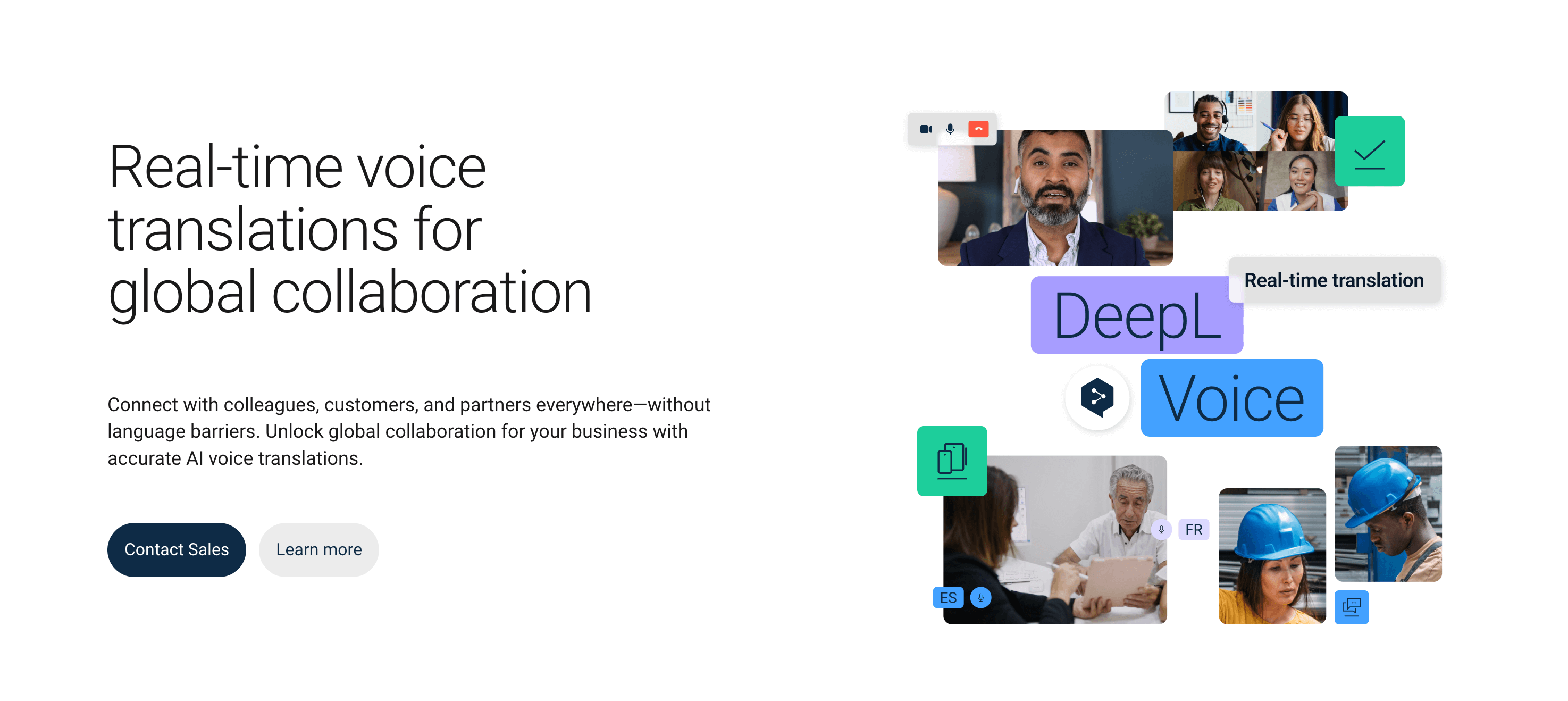
9. Speak & Translate
Best for: Apple device users seeking premium speech translation with offline capabilities and Apple Watch integration.
Speak & Translate is a popular iOS-focused app offering voice-to-voice translation in 100+ languages. What sets it apart is robust offline speech translation, Apple Watch support for hands-free use, and iCloud sync across devices. Its voice recognition is highly accurate, with adjustable voice speeds and accent options for playback.
Pros
- Apple Watch app for hands-free speech translation
- iCloud sync keeps conversation history across Apple devices
- Offline speech translation available for major language pairs
Cons
- Primarily optimized for iOS (limited Android functionality)
- Higher price point than some competitors
Pricing: Free version with limitations; Premium subscription starts at $7.99/month.
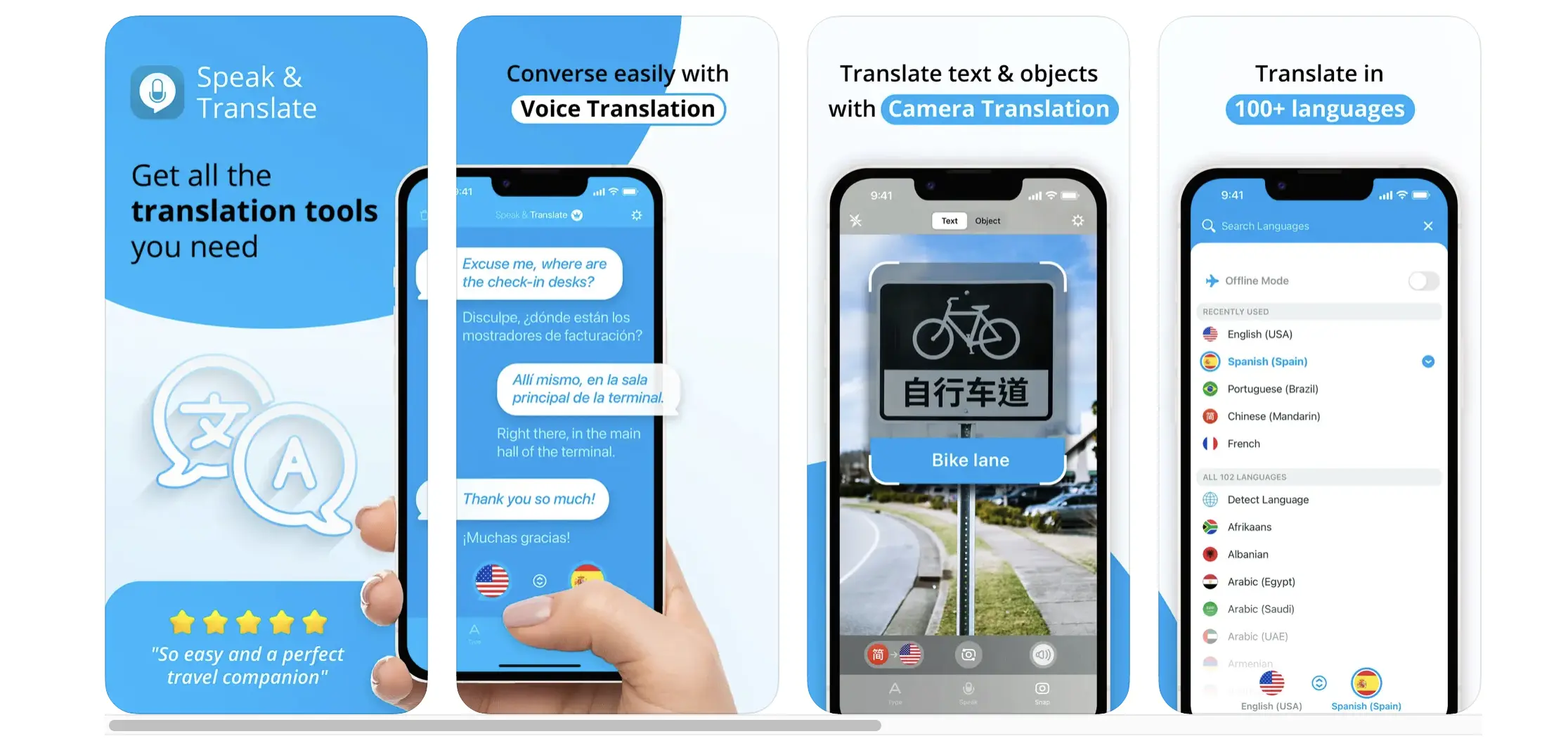
10. Vocre
Best for: Travelers wanting offline speech translation with dialect-specific voices for authentic conversations.
Vocre stands out for its extensive offline translation features and attention to regional dialects and accents. It supports voice-to-voice translation in 59 languages, with downloadable packs that work entirely offline. Its standout feature is dialect selection: instead of generic “Spanish” or “English,” you can pick Mexican or Castilian Spanish, or British or American English, with voice output matching each accent.
Pros
- Apple Watch support for quick access while traveling
- Phrasebook with audio for common travel scenarios
- One-time purchase option (no forced subscription)
Cons
- Offline language packs require significant storage space
- Interface feels dated compared to modern apps
Pricing: Free version with ads and limited features; Premium subscription is $8.99/month.

How to Choose the Best Speech Translator App for You
Finding the best speech translator app depends on your specific needs: whether you’re a traveler, business professional, or language learner. Below is a breakdown of the most important factors to consider before committing to any tool.
Accuracy and Language Coverage
A speech translator app is only as good as its reliability.
- Look for apps with strong AI models (like DeepL or Microsoft Translator) that handle context well, approaching the accuracy of professional translators.
- Check language availability: some apps like Maestra cover more than 100 languages, while others specialize in a few (e.g., Papago for Asian languages).
- Consider accent recognition and tone handling, especially if you need it for multilingual conversations.

Real-Time Performance and Offline Access
Speed and reliability matter most during live interactions.
- Choose apps offering real-time voice translation with minimal delay.
- For travel or fieldwork, ensure offline functionality, as downloadable language packs can be lifesavers when you lack connectivity.
- Test the latency and response time in real-world conditions, not just demo videos.
Voice Quality and Naturalness
Not all voice outputs sound human.
- Prioritize apps with clear, natural-sounding voices that reflect proper pronunciation and emotion.
- Some tools, like Maestra, go further by offering AI voice cloning, allowing translated speech to retain the original speaker’s voice for a more authentic result.
- If you’re learning languages, seek apps with phonetic guides or native speaker audio samples(like Reverso) to help you practice conversations more effectively.

Privacy and Security
Privacy is non-negotiable, especially if you’re using speech translation professionally.
- Avoid apps that store or share your audio recordings without consent.
- Always read each app’s data usage and retention policy before enabling microphone access.
- If you're a business user, don't forget that enterprise-grade encryption and GDPR complianceare essential.
Platform Compatibility and Integrations
Make sure the app fits your devices and workflow.
- If you switch between devices, choose one that supports cross-platform syncing.
- For professional use, prioritize tools that integrate with video conferencing platforms such as Zoom, Microsoft Teams, or Google Meet.
- If you’re part of a multilingual team, choose apps that allow collaboration features for consistent communication across members.

Pricing and Long-Term Value
A free app isn't always the best deal.
- Compare free vs. premium tiers, as many speech translator apps offer full features only in paid plans.
- Check for lifetime purchase options if you prefer a one-time payment.
- For professional use, consider enterprise plans that include enhanced privacy and API access.
Conclusion
Speech translation has quietly become one of the most practical uses of AI: not flashy, just transformative. The best apps respond with the tone and rhythm of the conversation. What separates them now isn’t whether they work, but how naturally they fit into real communication.
Here's a final quick look at how each speech translator app stands out:
- 🗣️ Maestra — AI voice cloning and real-time multilingual translation in 125+ languages.
- 🌐 Google Translate — Free, simple, and supports 133 languages.
- 💼 Microsoft Translator — Ideal for team meetings and collaboration.
- 🎧 iTranslate — Natural voice output with offline mode.
- 🇰🇷 Papago — Excels in Asian languages and tonal accuracy.
- 🗨️ Reverso — Great for language learners with native examples.
- 🇷🇺 Yandex Translate — Strong for Russian and Slavic languages.
- 🧠 DeepL Voice — Enterprise-grade precision and integrations.
- 🍎 Speak & Translate — Optimized for Apple users with offline access.
- ✈️ Vocre — Travel-friendly with regional accent support.
In the end, best speech translator apps are the ones that disappear into the conversation, letting people take center stage.
Frequently Asked Questions
Is there an app that can translate speech in real time?
Yes, Maestra can translate speech in real time across more than 125 languages. It instantly converts spoken words into your preferred language with natural voice output. The tool works directly in your browser, making it ideal for meetings, events, and live conversations.
How accurate are live speech translators?
Most live speech translators today are highly accurate because of major improvements in machine translation technology. They can deliver fluent and context-aware translations in real time. Still, accuracy may drop with background noise, heavy accents, or very technical language.
Which voice translator is most accurate?
While no single tool can claim perfect accuracy, Maestra stands out for real-time speech translation across 125+ languages with robust performance in live sessions. Microsoft Translator also performs strongly for professional meetings, while iTranslate delivers smooth results for everyday communication. For Asian languages, Naver Papago remains one of the most reliable options.
Is it safe to use speech translator apps?
Yes, most speech translator apps are safe to use, but it depends on the service and how it handles your data. Trusted apps use encryption and follow strict privacy standards to protect your information. Always review a service’s privacy policy before granting microphone access or having conversations online.
Is there a better speech translation app than Google?
This depends on your needs and preferences. While Google Translate offers broad language support and free access, some apps may outperform it in specific areas like accuracy or enterprise features. Ultimately, the best speech translation app is the one that delivers the right balance of accuracy, features, and usability for your specific situation.
What is the best speech translator app for Android?
For Android users, Google Translate is generally considered the best all-around speech translation app. It supports 133 languages, offers offline translation, and includes a conversation mode for real-time dialogue. iTranslate is another reliable and user-friendly option for those who value clear voice playback and offline functionality.
What is the best speech translator app for iPhone?
Speak & Translate is one of the best speech translation apps for iPhone, offering seamless Apple Watch integration, offline capabilities, and support for over 100 languages. iTranslate is equally worth considering for its natural-sounding voice translations and everyday usability. Meanwhile, those seeking a built-in solution can turn to the default Apple Translate app, which comes preinstalled on iPhones.
What is the best speech translator app for PC?
For PC users, Maestra is one of the best options for real-time speech translation. Its browser-based platform requires no installation and supports live multilingual conversations in over 125 languages. Another strong tool is KUDO, which is designed for international meetings and conferences and offers high-quality live speech translation.
Can ChatGPT translate a live conversation?
ChatGPT can assist with translating text-based conversations in real time, but it doesn’t yet support live speech translation. It can help translate what’s said if you input the text manually. For actual speech-to-speech translation, you'll need a dedicated tool like Maestra.
